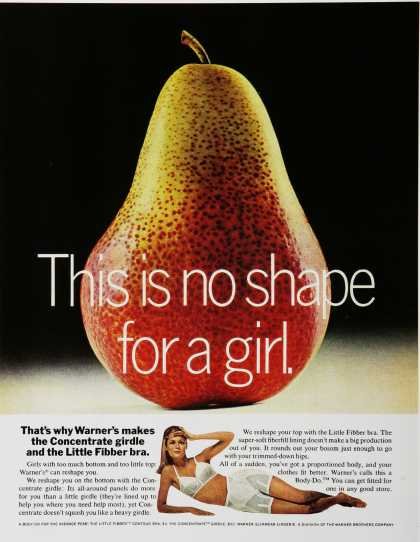Liking Yourself is a Rebellious Act
“Beauty is in the eye of the beholder.” Like, okay, but what the hell does that mean? What is beauty? Who is the beholder? The concept of “beauty” has never been one objective, tangible fact, but somehow it is something that every woman is plagued with achieving. TeenVogue writer Jessica DeFino emphasizes that, in our modern society, the “beholder” is white supremacy and capitalism, and it is at their will these trends of “beauty” continue. A quote from artist Caroline Caldwell has always stuck with me:
“In a society that profits from your self-doubt, liking yourself is a rebellious act.”
We are told there is something wrong with us; our skin is too greasy, our bodies too unattractive. Then, we are sold the “cure.” The cycle never ends. By liking, or even more radically: loving yourself, you rebel against the world that is telling you that the way you look needs to be fixed. Naomi Wolf, author of “The Beauty Myth: How Images of Beauty Are Used Against Women,” says that “to suggest that there are universal ideals of beauty that transcend culture … completely fails to comprehend the way that ideals of beauty have been constructed to be sold.”
Contemporary beauty standards emphasize a curvy, hourglass body shape with a voluptuous butt. But, almost exactly one hundred years ago in the 1920s, the sought-after body type was extremely boyish, flat, and illustrated a rectangular silhouette. By taking a look at beauty standards through the decades, we are truly able to see how often they change, and how subjective, and damaging, the concept of “beauty” can be.
The beauty trends of the 1920s were almost exactly opposite of what society considers beautiful today. Undergarments were created to flatten, rather than accentuate, possible curves and give a “youthful” look. In the Jazz Age, culture was very much driven by black artists and musicians; yet, beauty standards remained incredibly euro-centric and white. Straight or wavy silky hair was the goal, and kinkier hair was considered socially unacceptable; advertisements were specifically targeted to “motivate the conformity of perms and other straightening remedies to the black community.”
In the 40s, the war had begun. The wealth and excess of the 20’s, of course curbed in the Great Depression, grew lesser as rationing began. Clothing was more practical, and the low, non-existent waist of the 20s was abandoned; the standard was a small waist with large hips and narrow shoulders. Then, as the war ended in the 50s, an era of beauty treatments began. Beauty salons were incredibly popular; women did everything they could to “stay beautiful:” facials, hair styling, manicures, weight loss treatments… everything. The marketing towards women in this era thrived off of insecurity. The ideal body type was the hourglass, with voluptuous curves emphasized by a tiny waist, which was achieved with suffocating undergarments.
Once more, the thin look of the 20s swings back into style during the 1960s. Models like Twiggy inspired the ideal of androgynous, petite, and slender bodies, with slim hips and a smaller bust. Since the ideal was stick-thin, the dieting industry became very successful during this time, profiting off of women’s insecurities with body image. Advertisements like this one for Warner undergarments specifically told women they were lesser if their bodies did not match what they deemed attractive: “this is no shape for a girl.” Only two decades prior had the “pear” body type with large hips and narrow shoulders been the goal. The seventies didn’t differ much in body trends; flat-stomachs and lean bodies were the ideal.
A time to spend all your free time exercising, the 80s ideal was to have an extremely lean body and athletic build. A focus on skin, anti-aging and anti-acne, was present again. Anti-aging creams and products were popular alongside new acne treatments. Makeup during this time also became very popular, with bold looks in both color and style. Bushy eyebrows were favored, alongside crazy big hair.
Again, we have the skinniest, most slender body type as the ideal once more; “Heroin Chic” was the look during the 90s, with grunge music inspiring a gaunt, petite, thin look. Kate Moss is said to have ushered in this look with her narrow, “waif”-like appearance. Still skinny but more toned, the 2000s brought in the tanned and toned look. Of course, flat stomachs are necessitated and the era of Victoria’s Secret Angels begins.
Today’s standards revolve around flat stomachs with an impossibly narrow waist, toned and athletic bodies, and a large butt, ushered in by none other than the Kardashians (in the picture below, Kourtney Kardashian advertises “Flat Tummy Tea” on Facebook, a controversial weight loss product). This is another example of the grave danger that these beauty ideals create for women: the popularity of the “BBL” (brazilian butt lift), an extremely dangerous and elective plastic surgery where fat is removed from other areas of the body and placed into the buttocks and is directly caused by the advertisement of this body type ideal. “Waist Trainers” are also an incredibly popular undergarment used to cinch waists and squeeze organs to force the illusion of a narrow waist. When done incorrectly, this undergarment can constrict breathing ability; spinal surgeon Dr. Paul Jeffords warns that prolonged use of this device can even cause permanent damage to the spinal structure, nerves, and ligaments.
Beauty in society will forever be unattainable, especially in our modern era of social media, where celebrities, influencers, and everyday people alike change and distort their bodies to match the ideal. There will always be something that they can sell to you, always something they can say is wrong or unattractive; as long as you know your worth, you are beautiful. Beauty is in the eye of the beholder, after all.
Be unapologetically yourself; be rebelliously beautiful.
Strike Out,
Written by: Haley Wright // Edited by: Lindsey Valenti
Orlando






